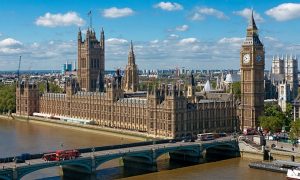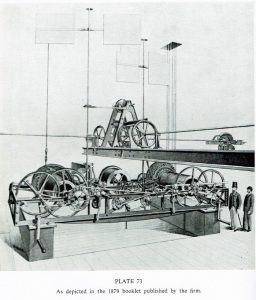Edward John Dent, how a chronometer maker made the turret clock of Big Ben, part 2.
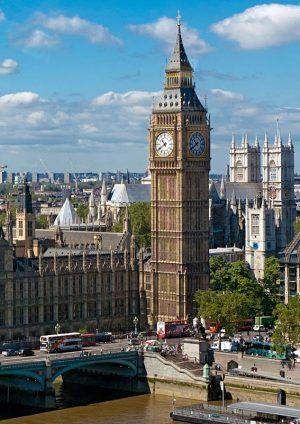
This is the second and final part of the written version of a lecture that I have held in May 2016 here in the shop.
In a great fire in 1834 the English Westminster palace, the seat of parliament was mostly destroyed. The architect Charles Barry won the bid to build a new palace which was also to have a tower containing a clock. In 1844 Barry asks Vulliamy to draw plans for a turret clock. These plans would be the basis for the bids of clockmakers wanting to win the commission of making the clock. It is very unusual for a clock to be made like this but very logical for an architect. You make a drawing of a bridge and after that you have builders compete to make this bridge. He doesn’t realise that building a clock is something completely different. It can be built in many different ways and technical elements which leads to totally different designs.
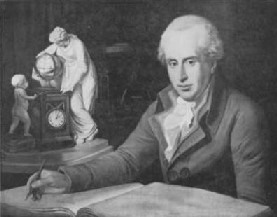 It is not very strange that he choose Vulliamy. Because we know that Barry’s son John worked for Vulliamy from 1836 until 1841. Therefore we know that they were aquainted. Vulliamy agrees with the assignment but states that he wants 100 pounds for the drawings and 00 pounds more if he doesn’t get the bid. Although Vulliamy doesn’t give an estimate openly, we know from his notes that he thought it would cost 3.600 pounds and would take two years of work.
It is not very strange that he choose Vulliamy. Because we know that Barry’s son John worked for Vulliamy from 1836 until 1841. Therefore we know that they were aquainted. Vulliamy agrees with the assignment but states that he wants 100 pounds for the drawings and 00 pounds more if he doesn’t get the bid. Although Vulliamy doesn’t give an estimate openly, we know from his notes that he thought it would cost 3.600 pounds and would take two years of work.
In July 1845 Dent writes Airy to let him know that he wants to compete for the bid to make this clock. He asks if Airy can put in a good word for him on account of his clock that he made for the Royal Exchange. Airy replies that he will support Dent for the bid because he still thinks that the Royal Exchange clock is the best public clock in the world.
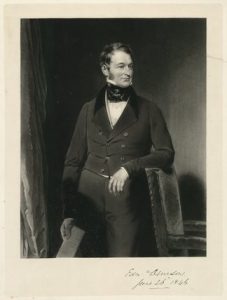 Dent also asks Denison if he wants to support him for the bid. Denison a lawyer by profession had written a book on clock making and had acquired a reputation in the field. He was also very active with the restoration of churches and other old buildings. Through the restoration of these buildings he also got experience with the restoration of turret clocks. He was of noble descent had good connections.
Dent also asks Denison if he wants to support him for the bid. Denison a lawyer by profession had written a book on clock making and had acquired a reputation in the field. He was also very active with the restoration of churches and other old buildings. Through the restoration of these buildings he also got experience with the restoration of turret clocks. He was of noble descent had good connections.
In November 1845 Dent notifies the building commission that he wants to join in the bidding for the clock. He learns that he can bid on drawings that will be supplied at a later date. Dent is very disappointed and writes Denison that he doesn’t want to work according to the plans of someone else. He is convinced that his own design will be superior and that he has a much better chance to get the commission with his own plans.
Dent decides to write the building commission that Airy is the right person to judge the design for this turret clock. It’s a smart move because in this way he introduces his own supporter to the building commission. He also states in this letter that he will not join the bid for the commission if he can’t submit his own plans.
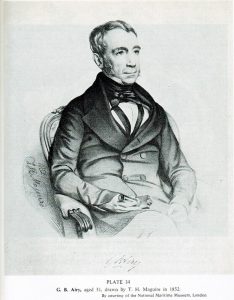 As late as June 1846 the building commission asks Airy to help them with the building of the clock. They probably contact him because the whole clock project was not going forward because Vulliamy hadn’t submitted his plans yet. Airy answers in a letter that he has had this job before with the building of the clock for the Royal Exchange. He also writes that he suggested Vulliamy and Whitehurst for the bid but that for inexplicable reasons, the Gresham committee decided to choose Dent. This comment is of course very peculiar since Airy was probably instrumental with Dent winning the bid for the Royal Exchange clock. He makes almost sound that he had nothing to do with the choice of the committee in that matter. He does say however that Dent did a very good job and came up with some very good innovations and therefore he should be asked as well.
As late as June 1846 the building commission asks Airy to help them with the building of the clock. They probably contact him because the whole clock project was not going forward because Vulliamy hadn’t submitted his plans yet. Airy answers in a letter that he has had this job before with the building of the clock for the Royal Exchange. He also writes that he suggested Vulliamy and Whitehurst for the bid but that for inexplicable reasons, the Gresham committee decided to choose Dent. This comment is of course very peculiar since Airy was probably instrumental with Dent winning the bid for the Royal Exchange clock. He makes almost sound that he had nothing to do with the choice of the committee in that matter. He does say however that Dent did a very good job and came up with some very good innovations and therefore he should be asked as well.
What would have happened if Vulliamy had made his plans more quickly? I think that it is safe to say that he probably would have gotten the commission and things would have gone totally different.
The committee are pleased with Airy’s help and give him a lot of influence. Just as with the Royal Exchange clock Airy lays down a number of demands for the design. He wants a pocket chronometer to be made with the clock so it can be checked against the Observatory. Again the striking should not interfere with the going train of the clock. Because the clock will be a showcase of Britain’s ability the clock should be accessible for the public. Further specifications are; compensated pendulum, maintaining power, escapement remontoire, deadbeat escapement, regulating spring working on the bob of the pendulum, striking should be within a second of the hour and the frame must be made in way that each part can be taken out for maintenance. Finally, the maker should study the Royal Exchange clock and Airy will be the judge of the final clock. Of course Barry the architect is not happy with the interfering by Airy.
In July 1846 Barry asks Whitehurst and Vulliamy to compete for the bid. Vulliamy declines straight away because he feels that he has no chance because Airy is prejudiced against him.
On August 8th Dent sends in his bid for 1500 pounds. Whitehurst follows in September with a bid for 3.400 pounds.
Vulliamy sends in his drawings now finally following up on his agreement with Barry to earn his 200 pounds. He doesn’t give a figure for the costs though. It is a clock with a heavy 210 – 240 kg pendulum with a double mahogany rod and Lepaute’s pinwheel escapement. Vulliamy makes a smaller model of this clock which is seen by Denison who writes that it is a very smart and well made clock. (March 1847)
One of the committee members asks Vulliamy that he should consider trying for the bid. This gives Vulliamy hope that he still might have a chance to get the bid. He writes a letter to Airy in which he states that he would compete for the clock if anyone but Airy would be the judge.
When Airy is asked to comment on both Dent and Whitehurst he states globally the following;
Dent has a slightly larger and more modern workshop. He is also more experienced with precision than Whitehurst.
Whitehurst on the other hand is a more experienced maker of turret clocks and should be able to do a fine job. Both makers would need help of an engineer with the frame and first wheel purely on the size of the clock. The following remark is to my opinion the most telling of Airy’s opinion. He states that Dent will probably sooner learn Whitehurst’s stability than that whitehurst will learn Dent’s precision.
When asked to comment on the large difference in price he states that Whitehurst probably has put on a little ‘premium’ because it is a prestigious commission. Dent on the other hand being the shrewd businessman that he is might have given a price lower than the actual cost because he realises the publicity that he might gain with the commission.
The committee also ask Airy what his opinion is on Vulliamy’s plans. He says that he can’t really comment on them because Vulliamy didn’t really enter the bid and that he doesn’t accept Airy as judge. But he does give a comment of some sort. According to Airy the clock is very well designed but that Vulliamy made a few elemental mistakes. The pendulum is not compensated and Vulliamy interpreted Berthoud totally wrong. For Airy it is clear that this design is a beautiful turret clock but not the technical marvel showing Britain’s excellence.
Things are looking good for Dent and it seems there is nothing standing in the way of him getting the commission. But things are not what they seem.
The great clock is not the only clock in the palace and Dent wants to get the commission of making the clocks for the offices etc as well. He writes a letter on May 3rd asking how he can join the bid for these clocks. He doesn’t get an answer and he writes another on June 7th which gets answered; he is too late with his bid because it closed in 1845.
Dent is very upset and he does something very peculiar. He writes the committee July 3rd to tell them that he won’t continue with the bid because he is not allowed to have a go at all the clocks in the palace. He writes Airy a long letter on July 7th to explain his decision. He complains that beside this matter he also feels that the architect Barry and builders are against him. They don’t answer him and they have lost one of his drawings.
The committee are in a difficult spot because the most likely candidate gets out of the bid and the whole clock project gets delayed even more. Airy intervenes letting the committee know that Dent has a point but didn’t treat the matter very smart by getting out of the bid. He still feels that Dent is the best option for the great clock. Late July Dent receives a letter that since his letter no clocks have been commissioned for the palace. In the future he will be able to bid for any further clocks and Barry is not allowed to order any clocks on his own. On August 4th Dent writes the committee that he joins the bid again. Looking back on these events it is very risky that Dent pushed things that far. In the end he got his way, but I don’t think it made his relation with Barry any better.
On March 18th 1848 Dent and Whitehurst sent in their final plans. It is around this time that Denison, later Lord Grimthorpe starts to interfere on behalf of Dent. He wields some influence and states that Barry and Vulliamy are against Dent and Airy. He also lets the committee know that he through his projects has bought turret clocks both from Vulliamy and Dent. Dent is to his opinion superior to Vulliamy and Vulliamy is superior to the rest.
Then nothing happens for about 2 years…..
We can only speculate why the project doesn’t get any further during this period. But my opinion is that because of the differences between Barry/Vulliamy and Dent/Denison/Airy, the committee just pushed the problem ahead without really trying to solve it.
In August 1851 Airy writes a letter to ask the builders if a ventilation shaft or part of it could be used for the weights of the clock dropping. He also asks if a hatchet could be made to hoist up all the parts of the clock. He gets a short answer that it is possible with a few adaptions of the plans.
In a joint letter to the committee on January 29th 1852 Airy and Denison state that according to the latest plans Dent is the best candidate to make the clock. On 16th of February Dent sends in his final plans and on February 25th he finally wins the commission. Eight years after Barry asking Vulliamy for plans of the clock.
On March 22nd Airy and Denison, and maybe Dent too have a look in the clock room to inspect the actual situation. They find that the room has been built as to fit the clock designed by Vulliamy! Barry had just followed his own plans and ideas. So, again the plans for the clock need to be adjusted.
Even after Dent has won the commission Vulliamy tries to get his way by filing a complaint for the Clockmakers Company in May 1852. He states that Dent is not fit to make this clock. But now Denison the lawyer infamous for his bad temper and strong verbal capabilities fights these allegations.
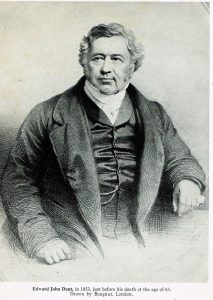 On March 8th 1853 Edward John Dent dies after a sick bed of about two months probably due to stomach cancer. Dent has two stepsons who had been working in the company for a long time already. They change their last name into Dent and they inherit the company. So Frederick Rippon becomes Frederick Dent and he takes over the turret clock part of the company. He writes the committee in May 1853 that the walls of the clock room still aren’t high enough to place the clock. But that the work on the clock is going smoothly, the pendulum had been running for over a half year and that he will have the clock ready in February 1854 as per contract.
On March 8th 1853 Edward John Dent dies after a sick bed of about two months probably due to stomach cancer. Dent has two stepsons who had been working in the company for a long time already. They change their last name into Dent and they inherit the company. So Frederick Rippon becomes Frederick Dent and he takes over the turret clock part of the company. He writes the committee in May 1853 that the walls of the clock room still aren’t high enough to place the clock. But that the work on the clock is going smoothly, the pendulum had been running for over a half year and that he will have the clock ready in February 1854 as per contract.
Several members in the committee now start a discussion if Frederick automatically can take over the contract that was made with Edward John Dent. I suspect that Barry fully supported that discussion. They have a few lawyers look into the matter but don’t write anything to Frederick.
Frederick has now started to use Denison’s gravity escapement which he mentions in a letter to Airy who would like to have a working model of it. Frederick Dent actually writes that this escapement performs really well even being mounted on a very simple movement.
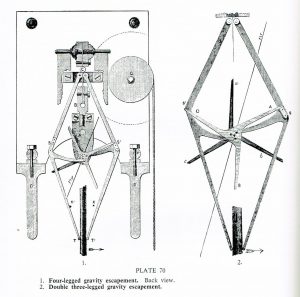 Now I want to elaborate a little on the gravity escapement designed by Denison. He has his first thoughts on this escapement in 1846 and through a number of phases makes it perfect in the years following. In 1851 he invents his double three legged gravity escapement. As earlier stated one of the biggest problems of a turret clock is the great power needed to deal with the influences of the weather via the hands that also work on the escapement. While precision needs only the slightest power working on the escapement so the pendulum can swing as freely as possible. The long rotating arms (a lot of leverage) are used to stop the wheel train which pushes a lot of power as said before. At the centre of the escapement the arms are lifted every time and gently laid against the pendulum rod. It is the weight of these arms that keep the pendulum swinging. With the pendulum weighing about 310 kg. and being 4.4 metres long it is massive. The wheel train would push the pendulum rod with a force of 3.2 kg. when a pinwheel escapement would be applied. A Graham escapement would push the pendulum rod with a force of 1.8 kg which is already much better. But Denison’s gravity escapement only pushes the pendulum rod with 113 grams!
Now I want to elaborate a little on the gravity escapement designed by Denison. He has his first thoughts on this escapement in 1846 and through a number of phases makes it perfect in the years following. In 1851 he invents his double three legged gravity escapement. As earlier stated one of the biggest problems of a turret clock is the great power needed to deal with the influences of the weather via the hands that also work on the escapement. While precision needs only the slightest power working on the escapement so the pendulum can swing as freely as possible. The long rotating arms (a lot of leverage) are used to stop the wheel train which pushes a lot of power as said before. At the centre of the escapement the arms are lifted every time and gently laid against the pendulum rod. It is the weight of these arms that keep the pendulum swinging. With the pendulum weighing about 310 kg. and being 4.4 metres long it is massive. The wheel train would push the pendulum rod with a force of 3.2 kg. when a pinwheel escapement would be applied. A Graham escapement would push the pendulum rod with a force of 1.8 kg which is already much better. But Denison’s gravity escapement only pushes the pendulum rod with 113 grams!
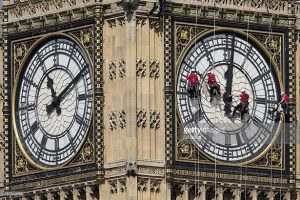 When you click on the button below you will see a youtube video of the escapement in motion.
When you click on the button below you will see a youtube video of the escapement in motion.
Denison was a good lawyer and smart horologist. But his temper and bad demeanour were infamous. When Airy asks Denison to provide Barry with the drawings of the frame in October 1853, Denison flat out refuses because he is fed up with Barry. He writes that Barry has been working against him all this time, that he doesn’t reply letters and that he already had received all drawings. A week later Airy asks again but Denison does not want to comply. Airy then writes Seymour the head of the committee to be relieved as a judge for the great clock. Because he is impressed by the horological knowledge of Denison but not of his way of conducting affairs and dealing with people.
On November 18th 1853 the committee informs Frederick Dent that they don’t feel obliged to comply with the contract that was made with Edward John Dent.
Frederick reacts immediately and writes a long letter to the committee. The two most important arguments are that Barry just doesn’t react to any letters and has been working against him. And most importantly, that he informed the committee about half a year ago that he would finish the contract. They knew but haven’t reacted and in this way silently agreeing with him finishing the contract. He also states that he isn’t a lawyer but two of his associates are and that the committee can deal with them about this turn of events.
It takes as late as June 1854 for Frederick to get an answer from the committee. They state that nothing really has changed but indeed, they knew he was working on the clock and by not informing him they automatically accepted him as maker of the clock. So finally Frederick can finish the clock.
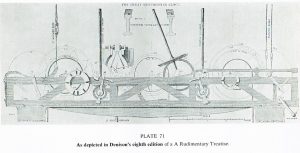 In April 1855 Airy goes to inspect the finished clock in Frederick’s workshop and soon after Denison does the same. Both are very impressed and satisfied.
In April 1855 Airy goes to inspect the finished clock in Frederick’s workshop and soon after Denison does the same. Both are very impressed and satisfied.
With the positive judges Frederick now has fulfilled his part of the contract. He writes a letter the to commission to inform them that he is ready but can’t place the clock yet because the tower still isn’t finished. He wants to receive the amount of the contract and will keep the clock running until he can place it.
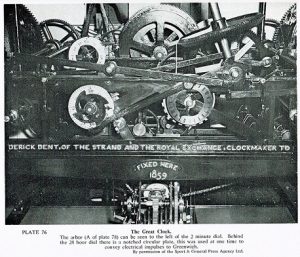 Finally in March 1859 the bells are installed and the tower is ready for the clock. After a short delay of two weeks because a couple of windows needed to be enlarged the installation can begin. After four weeks Frederick and his assistants place the clock. Just in time for the first assembly of the parliament in the new houses of parliament on May 1st the clock, the clock is ready and running.
Finally in March 1859 the bells are installed and the tower is ready for the clock. After a short delay of two weeks because a couple of windows needed to be enlarged the installation can begin. After four weeks Frederick and his assistants place the clock. Just in time for the first assembly of the parliament in the new houses of parliament on May 1st the clock, the clock is ready and running.
